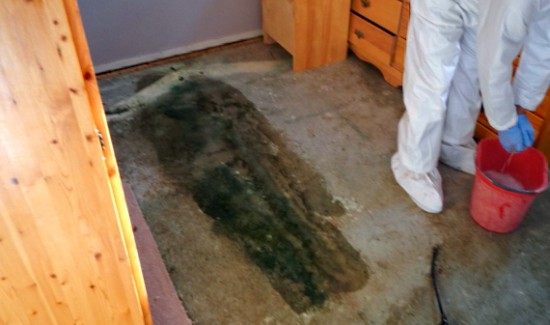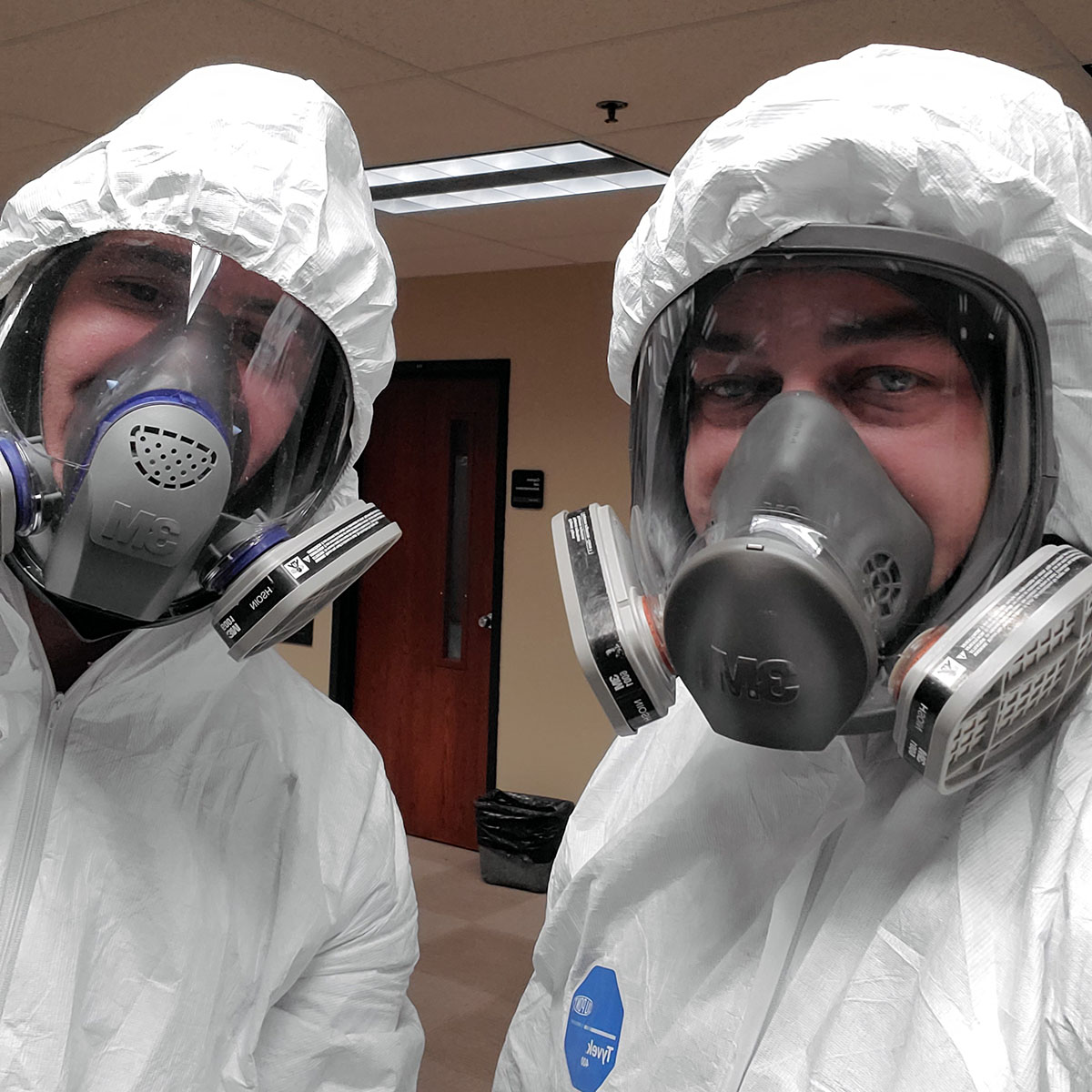Mold Remediation Services: Safeguarding Your Home from Mold And Mildew Damage
Mold Remediation Services: Safeguarding Your Home from Mold And Mildew Damage
Blog Article
Specialist Biohazard Cleansing and Decontamination for Blood, Bodily Fluids, and Hazardous Products
The possible health and wellness threats connected with direct exposure to biohazards emphasize the vital requirement for meticulous handling and thorough cleaning. As we browse the detailed landscape of biohazard cleanup, understanding the nuances of laws, conformity, and the specific devices at play comes to be vital in making certain a extensive and safe decontamination procedure.
Health Threats of Biohazard Exposure
Direct exposure to biohazards poses significant wellness dangers that can result in severe effects for areas and individuals alike. Biohazards encompass a wide variety of biological substances, including blood, bodily liquids, mold and mildew, germs, viruses, and other possibly transmittable products. When people come right into contact with these biohazards, whether through accidents, improper handling, or ecological exposure, they face the danger of having major ailments or diseases.
Among the primary wellness risks connected with biohazard exposure is the transmission of infectious diseases. Bloodborne pathogens such as HIV, hepatitis B and C, and different germs can be existing in biohazardous products, presenting a direct danger to human health and wellness. Breathing in air-borne biohazards like mold and mildew spores or coming right into contact with polluted surface areas can also result in respiratory system problems, allergies, and various other damaging health and wellness effects.
Additionally, biohazard exposure can have lasting wellness implications, with some illness materializing years after the initial contact (Blood Cleanup). As a result, it is critical to focus on proper biohazard cleaning and decontamination to reduce these health risks and guarantee the safety of people and neighborhoods

Specialized Educating for Biohazard Cleanup
When it comes to managing biohazard cleaning effectively and safely, specialized training plays an essential duty in making certain appropriate decontamination treatments are followed. Biohazard clean-up requires certain understanding and abilities to properly alleviate risks related to bloodborne virus, physical fluids, and unsafe products. Specialists educated in biohazard cleanup undertake strenuous direction on just how to securely deal with, eliminate, and deal with biohazardous products to avoid contamination and exposure.
Specialized training for biohazard cleaning covers a series of necessary topics, consisting of proper individual safety equipment (PPE) use, bloodborne microorganism understanding, purification techniques, and harmful waste disposal methods. Individuals trained in biohazard clean-up are outfitted with the necessary proficiency to evaluate contamination levels, identify potential dangers, and execute proper cleanup procedures in conformity with governing criteria.
Continual training and education are critical in the area of biohazard cleaning to remain updated on the newest purification innovations, safety protocols, and regulations. By spending in specialized training, biohazard cleaning experts can successfully respond to emergency situation cleanup situations and secure both public health and wellness and the atmosphere.
Significance of Appropriate Decontamination Strategies
Using correct decontamination methods is important in biohazard clean-up to efficiently eliminate unsafe products and decrease health dangers. Reliable purification not only guarantees the elimination of noticeable traces of blood, bodily fluids, and various other biohazards yet likewise targets unnoticeable pathogens that may pose serious health and wellness threats if not appropriately eradicated. By following rigid decontamination methods, trained professionals can significantly minimize the danger of direct exposure to harmful microbes, viruses, and germs that might result in infections or illness.
Appropriate decontamination techniques involve making use of specific equipment and disinfectants that are particularly developed to counteract biohazards successfully. Complete cleaning and sanitation of infected areas are vital to avoid the spread of microorganisms and guarantee a safe environment for residents. Additionally, the proper disposal of biohazardous waste complying with purification treatments is essential in protecting against contamination of other surfaces or individuals.

Equipment and Devices for Safe Cleaning
When dealing with blood, bodily liquids, or hazardous products, biohazard cleansing experts rely on specialized equipment to decrease direct exposure risks and completely decontaminate the damaged area. Additionally, biohazard cleansing sets including disinfectants, absorptive products, and biohazard bags are made use of to safely include and get rid of of contaminated products.
Advanced cleansing Read Full Article devices like hospital-grade disinfectants, HEPA-filtered vacuums, and fogging devices are used to sterilize surfaces and get rid of biohazards properly. Specialized devices such as sharps containers and biohazard garbage disposal containers are utilized to safely handle sharp things and biohazardous waste materials. By making use of the best tools and tools, biohazard cleansing specialists can guarantee a comprehensive cleaning process that focuses on safety and security and decreases wellness risks for both workers and owners of the damaged room.
Rules and Conformity in Biohazard Cleansing
Proper adherence to guidelines and conformity requirements is paramount in biohazard cleansing to ensure the security of both personnel and the environment. Federal government agencies such as OSHA (Occupational Security and Health Management) and the EPA (Epa) have actually established specific guidelines for biohazard cleanup procedures to minimize health and wellness threats and ecological contamination. These laws cover a series of aspects including the handling, transportation, and disposal of biohazardous products, as well as the needed training and safety devices needed for workers included in the clean-up process.
Biohazard cleaning firms must remain current with these guidelines to guarantee that their procedures satisfy the called for security requirements. Failure to follow these regulations can cause extreme consequences, including penalties, lawsuit, and endangering the wellness of individuals and the environment. By complying with stringent laws and conformity steps, biohazard cleansing firms can efficiently minimize risks and make sure a safe and extensive clean-up procedure for all events included.
Verdict
In final thought, biohazard cleansing and purification call for specific training, correct techniques, and adherence to policies. Direct exposure to blood, bodily liquids, and unsafe materials positions considerable health and wellness dangers, making it important to utilize the appropriate equipment and tools for secure clean-up. By complying with stringent methods and standards, professionals can efficiently alleviate the threats related to biohazard exposure and make certain the safety and security of both themselves and others.
As we navigate the elaborate landscape of biohazard cleanup, recognizing the more information subtleties of policies, compliance, and the specific devices at play ends up being crucial in making certain a comprehensive and risk-free decontamination process. (Blood Cleanup)
When it comes to managing biohazard cleaning efficiently and safely, specialized get more training plays a basic function in ensuring proper purification procedures are adhered to.Making use of correct purification techniques is crucial in biohazard cleaning to successfully minimize and remove dangerous materials health dangers. In addition, biohazard cleansing sets consisting of anti-bacterials, absorbing materials, and biohazard bags are used to safely include and dispose of contaminated things.
Government companies such as OSHA (Occupational Safety and Health Management) and the EPA (Environmental Protection Agency) have actually developed certain standards for biohazard cleanup treatments to minimize health and wellness threats and ecological contamination.
Report this page